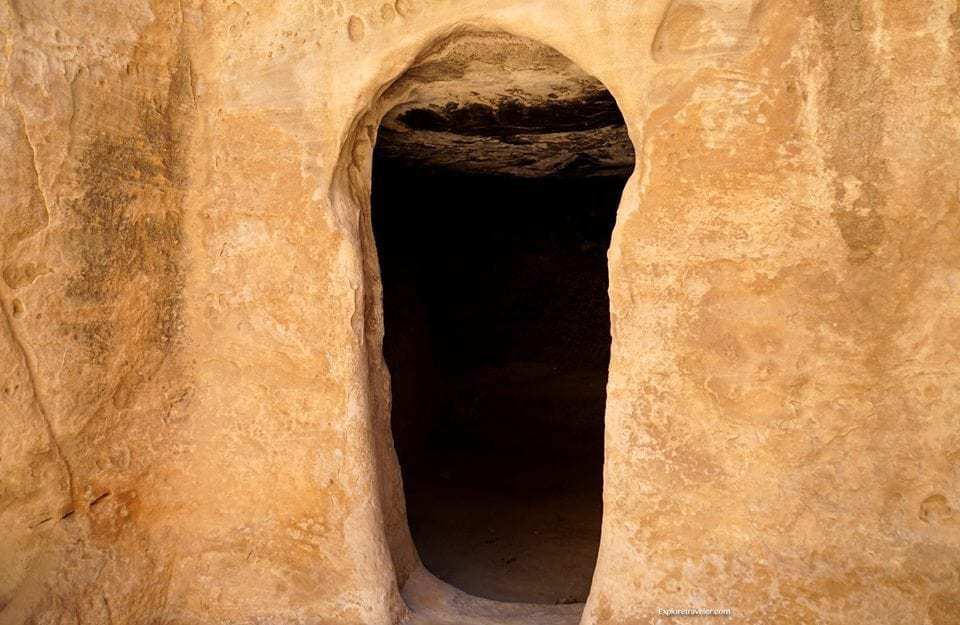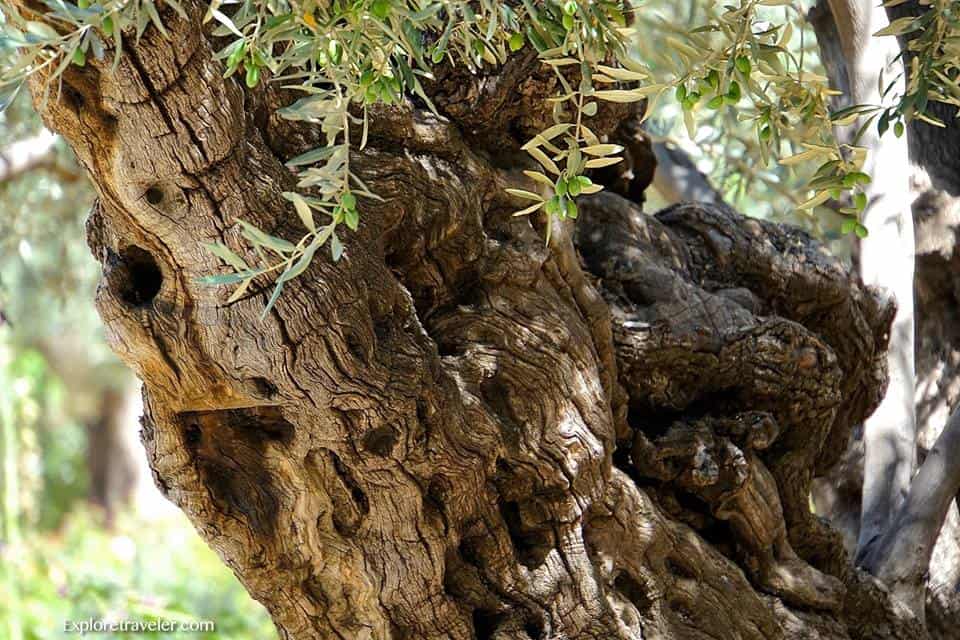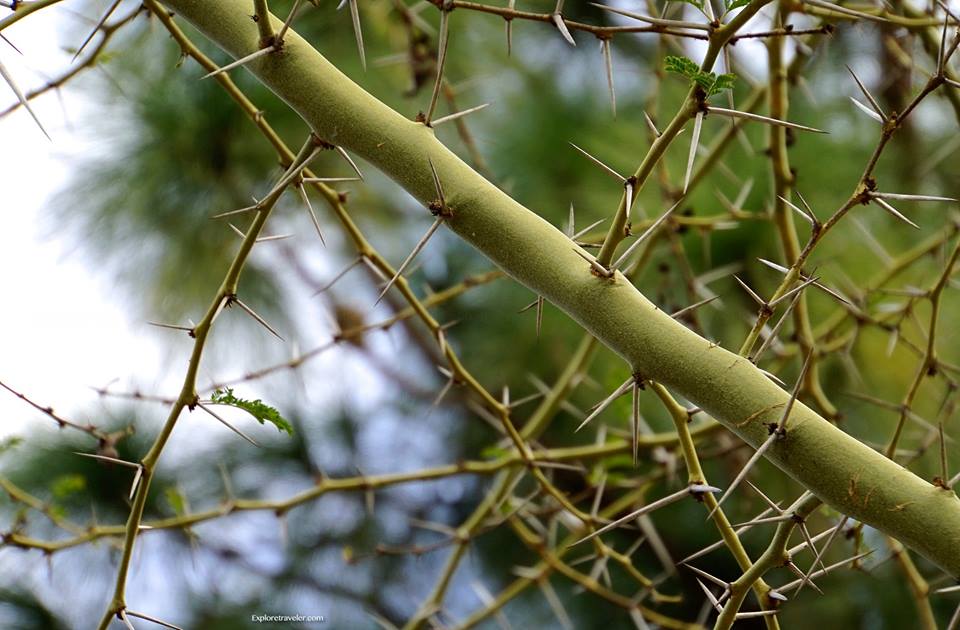 He Has Risen; He Is Not Here
He Has Risen; He Is Not Here
Matthew 28:5-6 “Do not be afraid, for I know that you are looking for Jesus, who was crucified. He is not here; he has risen, just as he said.”
He has risen! He is no longer in the grave! Come see the place where they have laid Him! These are the words that echo across the land, in every tongue, in every nation where the faithful celebrate the resurrection of their Lord. People flock to the mountain top to greet the day and to remember that they have a living Savior who conquered the grave.
There is no greater privilege for believers than to experience the Holy Week in Jerusalem. In Jerusalem, they can walk in the steps of their Savior. Where else in the world can you do that?
In Jerusalem you can celebrate the greatest events in Christian history. Events leading to salvation. Here you can live the history of this most important day. You are experiencing Jesus’ life at the very place where history happened. What a moving experience anytime of the year. Imagine what it is like to be there today. It is unforgettable! It is an experience the faithful never forget.
“The light shines in the darkness”
“The light shines in the darkness” on the Church of the Holy Sepulchre in Jerusalem, the traditional site of the crucifixion. This is where the events of the Sunday before Easter begin. This day is known throughout much of the Christian world as Palm Sunday. Holy Week officially began in the Holy Land with an 8 am celebration mass. The day is completed with the procession of the palms in the afternoon. This is a day of jubilant celebration by many of the faiths throughout the world. It is an exciting time to be a pilgrim in the Holy Land.
They Entered At The Jaffa Gate
At 2:30 p.m.local time, several thousand Christian Catholic pilgrims from throughout the world begin a joyful march from the Village of Bethphage on the Mount of Olives. Christians from all over the world join with Catholic believers as they go out marching, waving their palms. They go out praying and singing in every language. They descend the western side of the Mount of Olives. Next they will cross the Kidron valley and enter into the Old City at the Jaffa gate. The procession ends at the Church of St. Anne’s.
The Orthodox believers follow the Patriarch as he leads them. Each will be bearing palm fronds. It is a colorful procession that winds down to the Church of the Holy Sepulcher and back to the Patriarchate. There are several other processions from the Armenian, Coptic and Syrian denominations. These also take place within the Church of the Holy Sepulcher.
What a beautiful sight to see, as all the many faithful begin their march in the Church of the Holy Sepulcher. What a joyful time it is, as they remember when their Savior road into the city on a small white donkey. The crowds were joyful and waved palm branches. This was the original Palm Sunday, so long ago.
On Thursday morning at 8am the Catholic faithful from around the world gather at the Church of the Holy Sepulchre in Jerusalem. The Mass of the Lord’s Supper is celebrated by the Latin Patriarch of Jerusalem. This is to remember the night in the Upper Room, where Jesus gathered with His disciples to break bread. Here at the Church of the Holy Sepulchre they remember that first Lord’s Supper, as Christians in every language, from every nation, join together to break bread.
In the afternoon of the same day, the Franciscans will make their traditional pilgrimage to the Cenacle or the Upper Room on Mount Zion. At what is known as the Holy Hour, a reading in several languages will take place in the Basilica of Agony in Gethsemane. Latter a candlelight procession will wind down from Gethsemane to Mount Zion for the Roman Catholic faithful. The Church of Saint Peter in Gallicantu will remain open during the night for worshippers to come and pray.
Entrance From The Courtyard
The Orthodox denominations celebrates the night with the washing of the feet celebration. This is in remembrance of that time in the Upper Room when Jesus washed the disciples feet. This solemn celebration takes place in the courtyard of the Church Of The Holy Sepulcher, as well as each of the Orthodox churches in the Old City. As with all the celebrations, the Orthodox faithful from every nation will gather for this time of remembrance.
Garden of Gethsemane
The Anglican, Lutheran and Protestant denominations also hold a procession on Thursday of Holy Week that begins at St. George’s Cathedral continuing on to the Redeemer’s Church and from there to Christ Church, ending at the Garden of Gethsemane. Here at the garden the Protestant faithful also have a place of prayer where they too can watch as the Savior prayed in the Garden of Gethsemane over 2000 years ago. The events of this night are recorded in Matthew’s Gospel:
Then Jesus went with his disciples to a place called Gethsemane, and he said to them, “Sit here while I go over there and pray.” He took Peter and the two sons of Zebedee along with him, and he began to be sorrowful and troubled.
Then he said to them, “My soul is overwhelmed with sorrow to the point of death. Stay here and keep watch with me.”
Going a little farther, he fell with his face to the ground and prayed, “My Father, if it is possible, may this cup be taken from me. Yet not as I will, but as you will.”
–Matthew 26:36-39
Local Christians living in the Holy Land of all denominations will watch with Jesus during this time of meditation and prayer. A Holy Hour in the Garden of Gethsemane is kept by the local followers of Jesus and pilgrims alike. This hour is extremely important and followers of many faiths will watch and pray in the Garden of Gethsemane this night. It is then followed by a candlelight procession to the church of St. Peter in Gallicantu. This is the church that is traditionally known as the site where Jesus spent the night after he was arrested.
Good Friday, is the day which most denominations believe Jesus was crucified and buried. There is a procession consisting of thousands of believers of many denominations. The followers bear crosses and are led by the Latin Patriarch of Jerusalem. The Latin Patriarch of Jerusalem is the Custodian of the Holy Sites. As they proceed down the Via Dolorosa, they will mark the Stations of the Cross.
Climbing Golgotha or Calvary
Upon arriving back at the Church of the Holy Sepulcher you enter on the south side through the left hand doorway. Instead of entering the sanctuary, you go to the right. Here you begin to climb a winding and steep set of stairs. You are now ascending Calvary (taken from the Latin) or Golgotha (taken from the Aramaic), where Jesus was crucified. Both names mean “the place of the skull.”
At the top of the stairs it opens unto a floor that is level with a rocky area, Here is where Jesus was crucified. This is the rock of Golgotha. It is here that the cross of Jesus stood, with two other crosses, one on each side. It is here that He died with a thief on each side. He was crucified as a common criminal. As you stand looking at the spot where the crosses stood, the weight and magnitude of the crucifixion comes over each pilgrim. How can it not?
At the rear of the Greek Chapel is another set of stairs leading back down. To the left of the stairs is what is called The Stone of Anointing. This slab is a reddish stone with candlesticks and a row of eight lamps overhead. Here you will find pilgrims kneeling and kissing the stone with great reverence, as it represents to them the place where Jesus’ body was anointed for burial. This is not the original stone, as it dates back only to 1810. The devotion of kissing the stone dates back to the 12th Century. Pilgrims often bring objects and lay on the stone, as they pray and ask favors for others who did not come.
There will also be many independent groups that will make their way down the Via Dolorosa in the Old City of Jerusalem. These processions all end at the Church of the Holy Sepulcher. All of the many processions remember that the Via Dolorosa is the way their Savior walked carrying His cross and all end at Calvary.
“Crown Of Thorns”
The “Crown of Thorns” is a sorrowful event that is remembered by all. These are the Branches of the Acacia Tree, which were used to make the “Crown of Thorns.”Jesus was beaten and a crown of thorns was placed on His head. This was the crown that he wore as he walked the Via Dolorosa over 2000 years ago. During the processions is a time of remembrance of this painful and sorrowful “Crown of Thorns” made from this extremely wicked and thorny tree. Many trees have thorns, but none like the Acacia Tree.
Can you imagine the pain caused by this “Crown Of Thorns?” No other tree has thorns like this! If you have ever met the thorn of the lemon tree, you know how they hurt. Imagine a thorn that is longer and larger. The thorn is like a razor, it is so sharp. This made up the “Crown Of Thorns!”
Crucifixion
A nail driven through the ankle bone was discovered in Jerusalem dating from the 1st century A.D. It provides a vivid and sobering visual of what it was like to be Crucified. The faithful of all denominations remember the agony that Jesus went through on the cross more than 2000 years ago. Crucifixion is the most painful way to die. Jesus hung on the cross like a common chemical. The weight of His body would have been excruciating.
A Little History About These Holy Sites
Three denominations share ownership of The Church Of The Holy Sepulcher. The Greek Orthodox, the Latin Church or Roman Catholics, and the Armenian Orthodox. The Greeks own the central worship space which is called the “Katholikon”. The Church is called “Anastasia’s” or Church of the Resurrection.
The Armenians own the underground Chapel of Saint Helena. They have renamed it to honor St Gregory the Illuminator.
The Roman Catholic or Latin Rite own the Franciscan Chapel of the Apparition. Catholic tradition states that the Risen Christ first appeared to His mother there. They also own an underground Chapel of the finding of the Cross.
Three small and minor Orthodox communities have rights to certain areas. They are the Coptic, Syriac, and the Ethiopian Orthodox. A Monastery of Ethiopian monks live a humble life in a type of African village located on the roof. The Ethiopian Monastery is called Deir es-Sultan.
The Church Of The Holy Sepulcher has over 30 Chapels. Each Chapel has all the trappings of the denomination who uses it. If you could strip all the man made buildings and stand on the bare dirt, you would stand between two places. Not more than 90 feet separates the two. You would be standing on dirt, rock, and grass. This was the conditions of the area when Jesus died and was buried here.
The Church Of The Holy Sepulcher
In the evening, the Catholics hold a burial procession which begins at The Church Of The Holy Sepulcher in the Old City. Many other churches in the Old City have similar processions through the city. Several Protestant churches have services at the Garden Tomb in Jerusalem. These services are held in several languages, including English.
The Tomb Where He Was Laid
Most of the processions lead to the garden tomb where Jesus was laid. In the center is a little stone house or tomb. The entrance is flanked by candles. This is the tomb of Christ or what is known as the 14th station of the cross as the processions walk to the tomb. It is here He was buried and from here He rose again. The stone is protected with a frame. It was here that he laid in the tomb for three days and three nights. It was from here that he arose on the Third Day.
Resurrection Day
On Easter Sunday, the Roman Catholic faithful celebrate the resurrection of Jesus Christ. They recognize that He has risen! The Latin Patriarch heads a procession to the Church of the Holy Sepulcher. At the Church of the Holy Sepulcher the Easter mass is said and a multi-lingual reading of the Gospel of Resurrection is read by the Patriarch.
The Lutherans hold the Easter day Eucharist on the Mount of Olives behind the Augusta Victoria Church. The service takes place out in the open and is held in several languages. They also recognize that He has risen.
Protestants hold the Easter services in English at the Garden Tomb as well as several Protestant churches located throughout Jerusalem. No matter which church, the message is the same. He has risen!
Orthodox denominations begin their celebration of Easter Sunday at midnight on Saturday night. A Patriarchal procession to the Church of the Holy Sepulcher winds through the old city. There are many celebrations of the Easter Divine Liturgy in the various Orthodox Churches in the Old City.









Comments are closed.